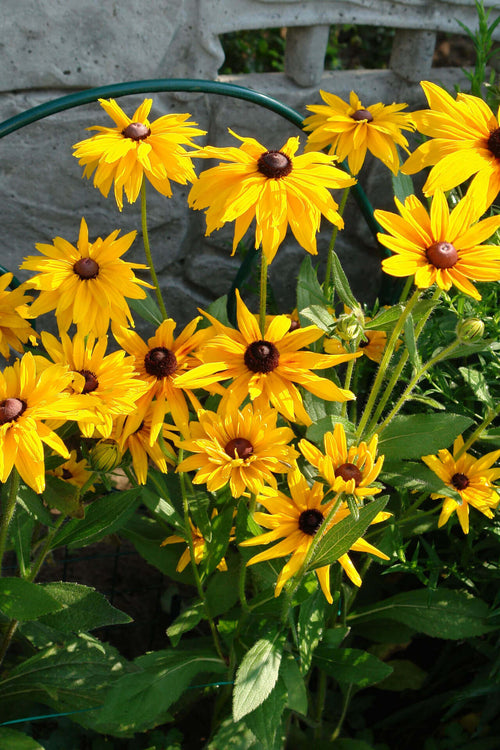Black-Eyed Susan (Rudbeckia) is a beloved summertime classic. These vibrant and captivating flowers can transform any outdoor space. However, planting Black Eyed Susan might be challenging for beginners. This guide will provide you with essential tips and tricks for growing and blooming these plants.
Selecting the Ideal Location to Grow Black Eyed Susan
Sunlight Requirements
Black Eyed Susan thrive in full sun, they need at least six hours of direct sunlight per day. Although they can tolerate partial shade, this can lessen their flower production. When selecting a location, choose an area with ample sunlight to provide the best-growing conditions for your Black Eyed Susan.
Soil Conditions
Black Eyed Susan prefers slightly acidic to neutral soil with good drainage. Heavy clay or compacted soil can impede root growth and result in poor performance. Before planting, ensure the soil is loose and well-drained. Adding organic matter, like compost or well-rotted manure, can improve drainage and enrich the soil. It creates a perfect place for your plants to grow.
Space and Spreading
Consider the mature height and spreading nature of Black Eyed Susan when selecting a suitable spot in your garden. These plants can reach heights of 2 to 3 feet and spread up to 2 feet. Provide sufficient space between plants to avoid overcrowding, this promotes healthy growth.
Soil Preparation
Weed Removal
Start by clearing the planting area thoroughly to eliminate any competition for nutrients and water. Weeds can hinder the growth of Black Eyed Susan, so make sure to remove them by hand or using appropriate garden tools.
Loosening the Soil
Black Eyed Susan prefers well-drained soil for adequate air circulation and water drainage. To achieve this, use a garden fork or tiller to loosen the soil to a depth of about 8 to 10 inches. This process helps break up compacted soil, allowing the roots to penetrate easily and establish themselves.
Organic Matter Addition
Enhance the fertility and drainage of the soil by applying organic matter such as compost or well-rotted manure. Spread a layer of organic matter over the loosened soil and thoroughly mix it in. This enriches the soil, providing essential nutrients and promoting a healthier root system for your Black Eyed Susan.
Techniques for Planting Black Eyed Susan
Digging the Hole
Dig a hole slightly larger than the root ball of your Black Eyed Susan plant. The depth should accommodate the plant at the same level it was in the container.
Placing the Plant
Gently remove the plant from its container and place it in the prepared hole. Ensure that the top of the root ball sits level with or slightly above the soil surface. Position the plant in a way that it is centered and upright.
Backfilling and Firming
Backfill the hole with soil, gently pressing it around the roots to eliminate any air pockets. Take care to firm the soil without packing it too tightly, as this can restrict root growth and hinder the plant's development.
How To Care for Black Eyed Susan
After planting Black Eyed Susan, you need to water the plant thoroughly to settle the soil and develop the roots. Water the soil around the plant enough to moisten it. But, be careful not to overwater, this can lead to root rot. Ensure the soil remains consistently moist during the first few weeks after planting to promote healthy growth.
Deadhead spent flowers to promote continuous blooming and prevent the plant from diverting energy to seed production. Prune the plants in early spring to encourage fuller and bushier growth.
While minimal fertilization suffices, consider using a balanced slow-release granular fertilizer for an extra nutrient boost during the growing season. Remember to follow the manufacturer's instructions for proper application.


















































